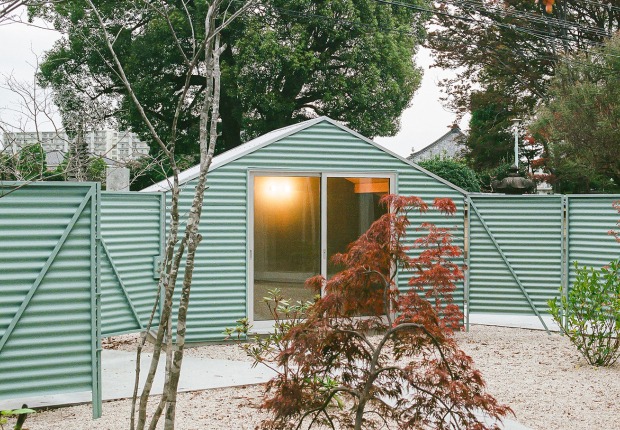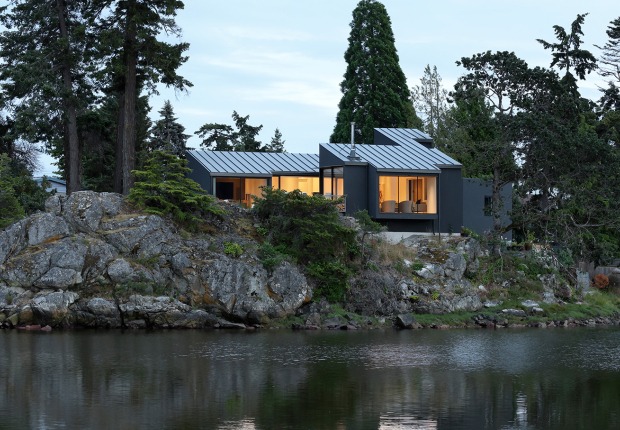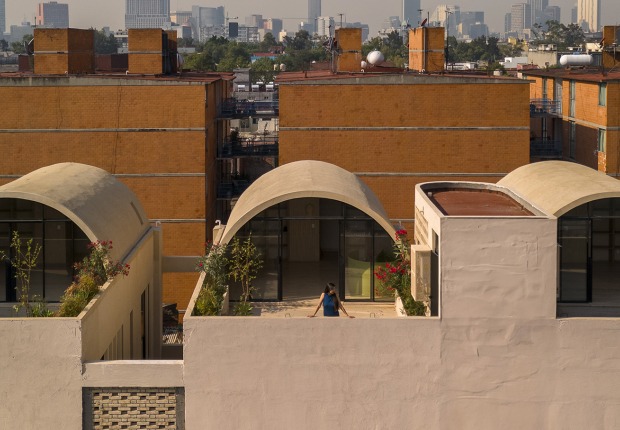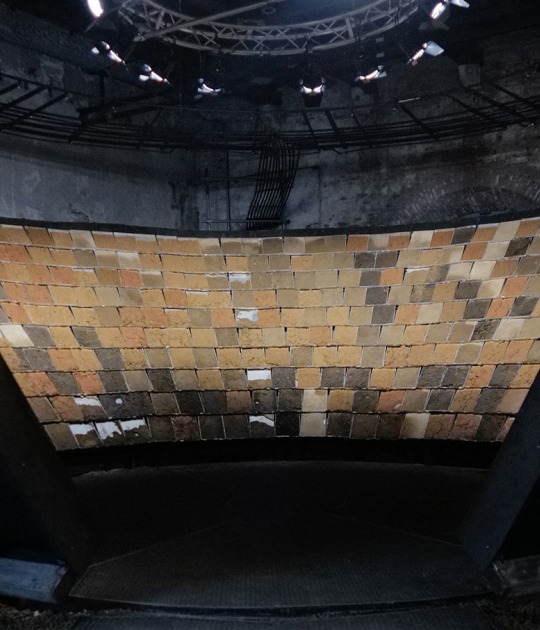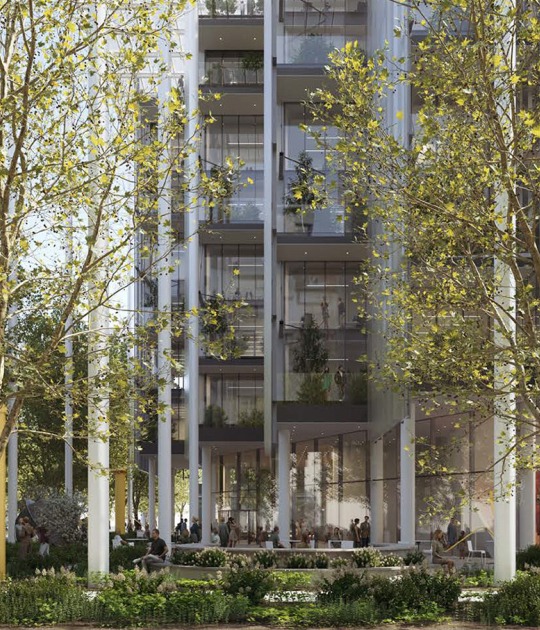The American University of Beirut (AUB) held an invited competition for the design of a structure to accommodate a modern-day think tank on its lush middle campus, one that was in harmony with the rest of the university, especially mindful of the surrounding greenery, and to preserve, as far as possible, existing sightlines to the Mediterranean.
The building had to fit into another stage in the implementation of a master plan for AUB, whose upper campus overlooks the water, and whose lower campus is located on the seafront. The architect responded to the project brief by producing a design that significantly reduces the building's footprint by "floating" a reading room, a workshop conference room and research spaces above the entrance courtyard in the form of a 21-metre-long cantilever in order to preserve the existing landscape.
The 3,000 square metre building is defined by the routes and connections within the university; the building emerges from the geometries of intersecting routes as a series of interlocking platforms and spaces for research and discourse. The massing and volume distribution fits very well with the topography, and the nearby Ficus and Cyprus trees are perfectly integrated with the project. The building’s construction is a continuation of the 20th century Lebanese construction culture of working with fair-faced concrete.
Aga Khan has given Zaha Hadid Architects the first award posthumous to its founding architect. Following the usual lines to which the practice has accustomed us, this 'think-tank' is proposed in Beirut, surrounded by open space which represents an oasis within the university complex in which it is situated.
A new building, radical in composition but respectful of its traditional context, “floats” above an exterior courtyard.
More information
Published on:
October 13, 2016
Cite:
"Issam Fares Institute for Public Policy and International Affairs by Zaha Hadid Architects" METALOCUS.
Accessed
<https://www.metalocus.es/en/news/issam-fares-institute-public-policy-and-international-affairs-zaha-hadid-architects>
ISSN 1139-6415
Loading content ...
Loading content ...
Loading content ...
Loading content ...
Loading content ...
Loading content ...
Loading content ...
Loading content ...
Loading content ...
Loading content ...
Loading content ...
Loading content ...
Loading content ...
Loading content ...
Loading content ...
Loading content ...
Loading content ...
Loading content ...
Loading content ...
Loading content ...
Loading content ...
Loading content ...
Loading content ...
Loading content ...
Loading content ...
Loading content ...
Loading content ...
Loading content ...
Loading content ...
Loading content ...
Loading content ...
Loading content ...
Loading content ...
Loading content ...
Loading content ...
Loading content ...
Loading content ...
Loading content ...
Loading content ...
Loading content ...
Loading content ...
Loading content ...
Loading content ...
Loading content ...
Loading content ...
Loading content ...
Loading content ...
Loading content ...
Loading content ...
Loading content ...
Loading content ...
Loading content ...
Loading content ...
Loading content ...






































